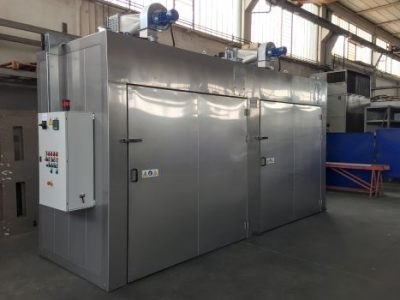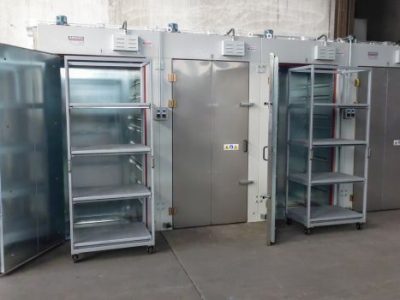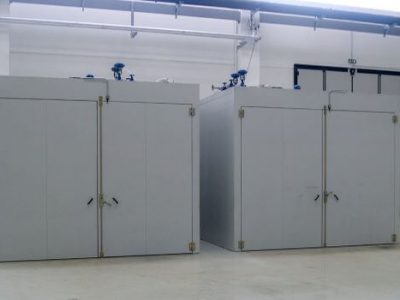Drying
The industrial drying process consists in removing the quantity of liquid required contained in a mass, for e.g. the water contained in foods, in order to allow preservation for a longer period, or also drying powders, paints or various materials such as clays and ceramics.
To make the liquid contained in the mass concerned (interstitial, present in between the layers or incorporated) evaporate, heat must be administered, therefore the body must be placed inside a drying oven.
The liquid quantity contained inside the part is removed by means of different processes, i.e. thanks to evaporation of fluid from the surface of the part and diffusion of fluid from inside the part to its surface.
The main factors to be taken into consideration for the drying process are:
- the quantity of liquid contained inside the body and its viscosity;
- the relative humidity of the atmosphere and the humidity gradient between the surface of the
part and inside it; - the permeability, shape, thickness and the dimensions of the part.
Evaporation is caused by sending a flow of hot air with low moisture content compared to that of the mass to be dried, which continuously removes the fluid that evaporates. The AMARC ovens make it possible to constantly check the humidity and temperature inside the drying chamber.





